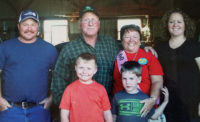 The NSC Congress & Expo takes on more of an international flavor each year. As per usual in recent years, you have the “China Village,” a group of dozens of small mostly PPE Chinese suppliers separated by thin white pegboard walls.
The NSC Congress & Expo takes on more of an international flavor each year. As per usual in recent years, you have the “China Village,” a group of dozens of small mostly PPE Chinese suppliers separated by thin white pegboard walls.
You also see more foreign names on badges, and hear more foreign accents.
Conducting business (or EHS affairs) on a global basis means some long-haul travel. The CEO of one PPE company talked at lunch of just returning from a 14-day trip to Australia and parts of Asia. “Man, I went straight to a steak house when I got home,” he said. “I can do a week on the road, but two weeks can get to you.”
Many of the PPE vendors here at the expo have execs and sales managers regularly criss-crossing the globe nowadays, a far cry from the smaller safety marketplace of 10-15 years ago. Back then, traveling cross-country was something of a big deal.
Now it’s 16-hour flights to Sydney, Australia, and navigating back country roads in Asian countries. “Flying can be tough, but what’s really hard on me is the driving,” said the CEO. “It’s nothing to be in the car for three to five hour trips.” And in a number of countries, the infrastructure is not exactly up to U.S. standards, you might say.
“Singapore is the shining light in Asia,” said the CEO. “The government is making a strong push on safety. Other countries are coming along, slowly coming along when it comes to safety. China’s getting a little bit better. Korea is a mixed bag. Their shipbuilding is almost state of the art, especially building drilling ships for global energy exploration. They want premier PPE that will last.” Once, the CEO said, he drove some hours beyond the shipyard in southern Korea and saw construction going up with absolutely no apparent thought to worker safety, no signs of personal protection. In other cases, he said he saw improvised PPE fall protection with ropes tied around workers’ waists, or perhaps knotted clothing wrapped around a waist.
Of course, you don’t have to drive many hours, if that, in the U.S. to see especially small construction projects, residential building, going up and workers on roofs with no fall protection.
It seems a hierarchy of safety cultures exists no matter where you travel. At the top, wanting the premier PPE, are multinationals with sophisticated safety and health management systems. Below those relatively few companies is a larger segment of firms who try to comply with safety laws, but often using improvisation, not technical expertise. And then there is a “hidden” population of businesses working off of anyone’s radar (regulators, NGOs, etc.) who claim they can’t afford safety equipment and daily roll the dice with workers’ lives.
It’s a small world in more ways than one.



